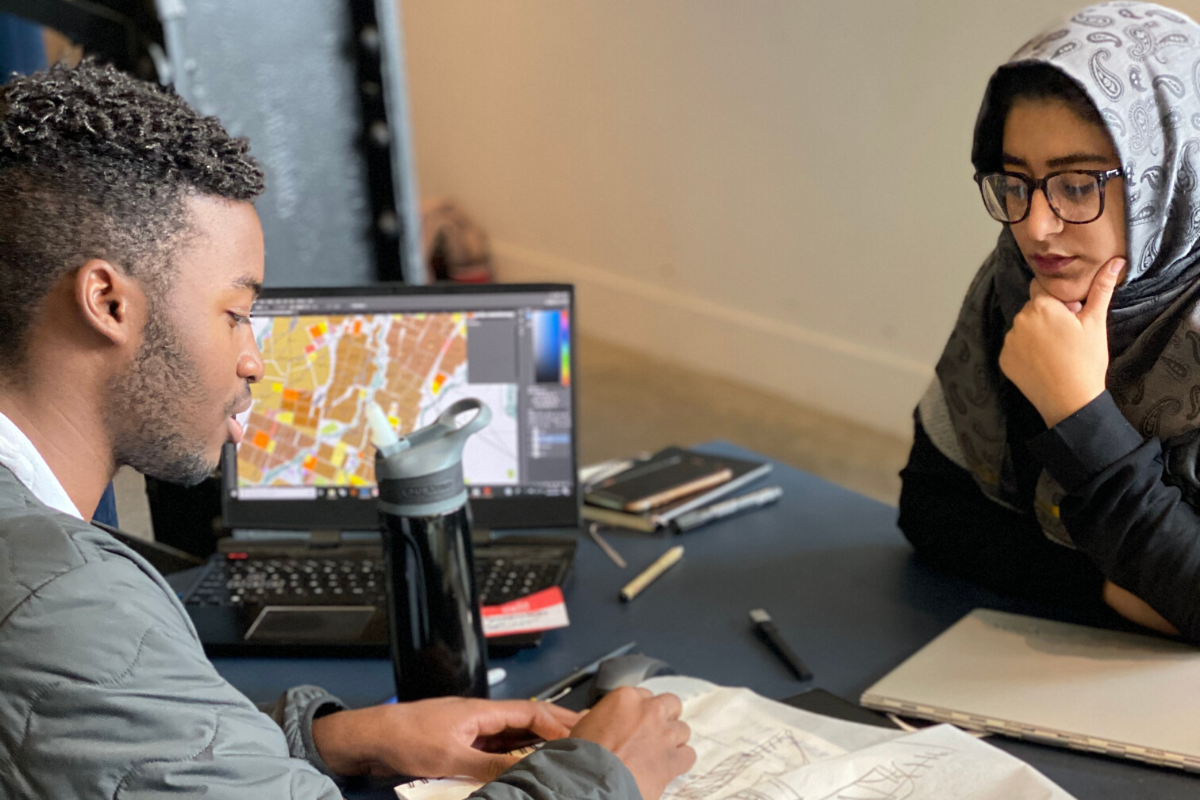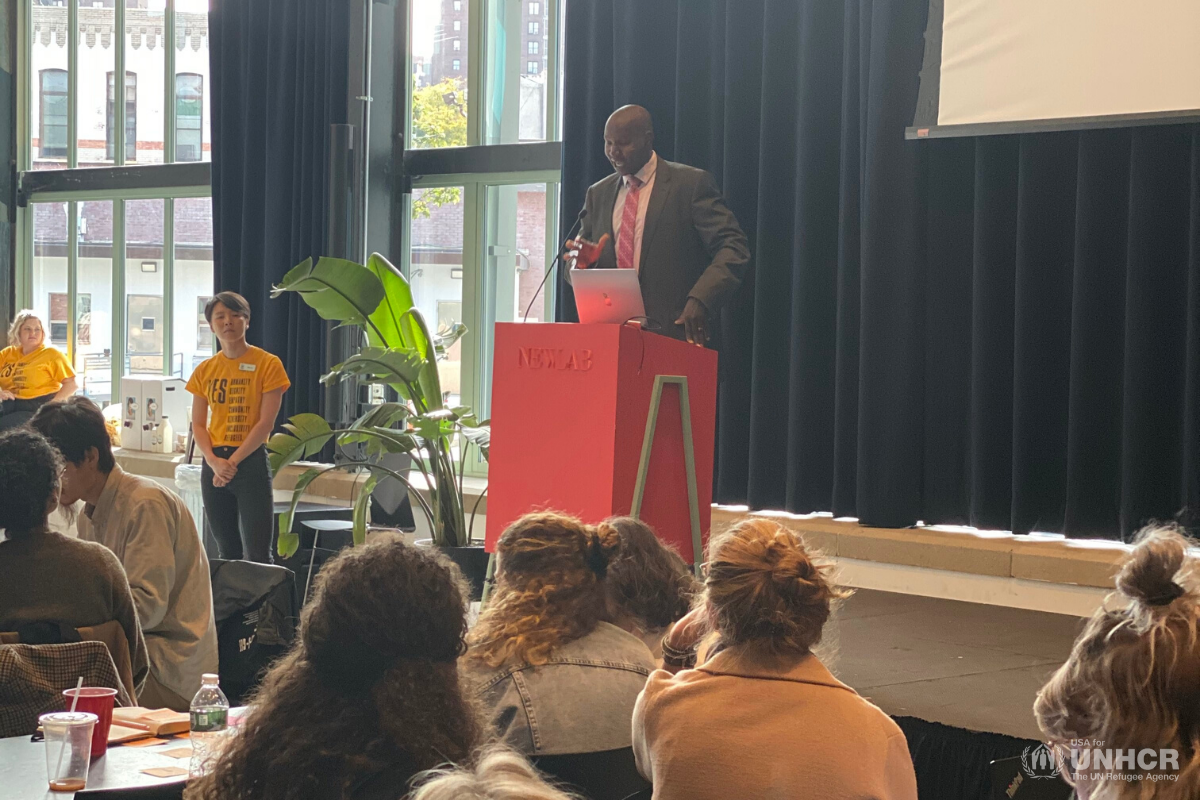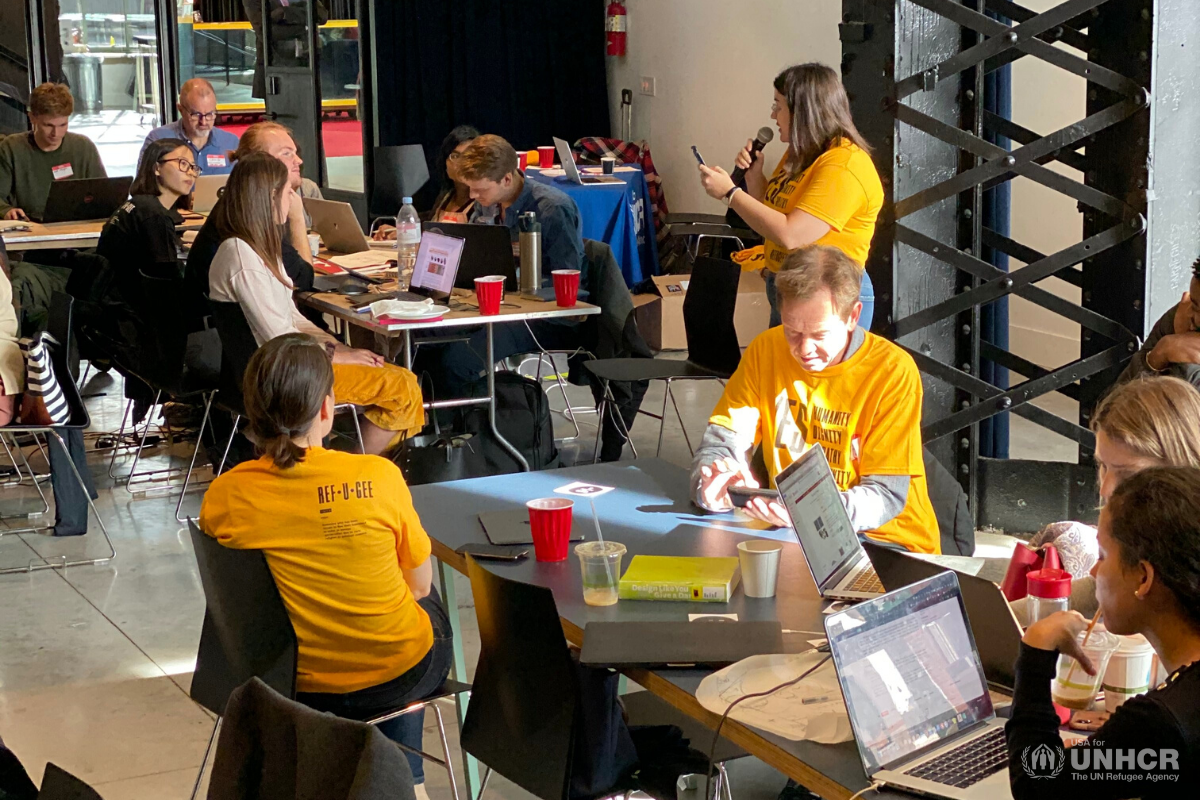#HackABetterWorld with Architects

On Saturday, October 26th, nearly eighty east coast architects gathered at the New Lab in Brooklyn to put their design and engineering skills to the test and #HackABetterWorld for refugees. Hosted by The Hive, USA for UNHCR’s innovation lab, the hackathon focused on designing shelter solutions for refugees that could be implemented under the constraints of a refugee camp.
Shelter is an essential lifesaving mechanism that UNHCR, the UN Refugee Agency provides for people who have been forcibly displaced. It protects refugees from the elements and is key to restoring their sense of security, ability to live self-sufficiency and feeling of dignity.
The Hive posed two challenges that explore housing solutions for refugees and displaced people under the following circumstances :
- Protracted refugee situations: How can we convert temporary shelters into permanent shelters to address protracted refugee situations?
- Climate change: How can we adapt shelters to be more resilient to climate change, including rising temperatures and natural disasters?
Participants focused on designing shelter solutions for Kakuma refugee camp, located in northwestern Kenya. They spent the first part of the morning becoming familiar with refugee issues, such as the materials that can be used to build a shelter (nylon tarps, mud, etc.) and the daily routine of refugees living in camps (water collection, education, etc.).

Biar Atem, a former refugee from Kakuma who now lives in Las Vegas, shared his own experience as a refugee and provided some insights on what shelter solutions could have the most impact for refugees. He spoke about his pursuit of education and how it helped him to resettle in the United States in his early twenties.
Although the architects only worked for twelve hours, they created some incredible prototypes primarily focused on repurposing existing materials in the camps, such as the nylon tarps and aluminum roofs. One group utilized the nylon tarps to create shaded public spaces while another group proposed the same tarps be used to create greenhouses to increase access to food. There was even mention of repurposing plastic bags and water bottles to create plastic bricks!
#HackABetterWorld yielded some incredible new tools that could directly impact the lives of refugees around the world.

Stay up to date on the latest activity from The Hive by subscribing here.


